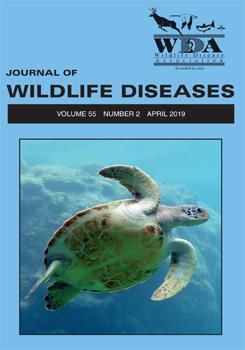From 2014 to 2016, we examined the effect of distributing oral rabies vaccine baits at high density (150 baits/km2) in an area of Virginia, US that was naïve to oral rabies vaccination prior to the study. We also compared the effect of baiting at high density in a naïve area to baiting at standard density (75 baits/km2) in an area that had been baited annually for 12 yr. Our results suggested that rabies virus seroconversion in raccoons (Procyon lotor) gradually increased each year under the highdensity bait treatment. However, we did not detect a difference in seroconversion between bait density treatments. Virginia opossums (Didelphis virginiana) were abundant in the study area and were a potentially important nontarget species that competed for oral rabies vaccine baits, but the ratio of opossums to raccoons in this study did not affect rabies virus neutralizing antibody response of the raccoon populations.
How to translate text using browser tools
9 April 2019
EFFECT OF HIGH-DENSITY ORAL RABIES VACCINE BAITING ON RABIES VIRUS NEUTRALIZING ANTIBODY RESPONSE IN RACCOONS (PROCYON LOTOR)
Kerri Pedersen,
Amy T. Gilbert,
Eric S. Wilhelm,
Kathleen M. Nelson,
Amy J. Davis,
Jordona D. Kirby,
Kurt C. VerCauteren,
Shylo R. Johnson,
Richard B. Chipman
ACCESS THE FULL ARTICLE

Journal of Wildlife Diseases
Vol. 55 • No. 2
April 2019
Vol. 55 • No. 2
April 2019
Bait density
oral rabies vaccination
Procyon lotor
rabies
rabies virus neutralizing antibodies
raccoon




